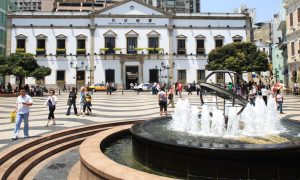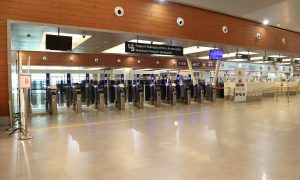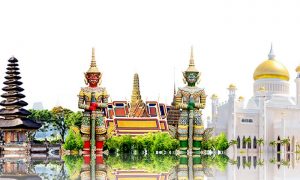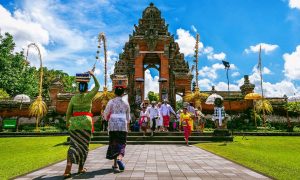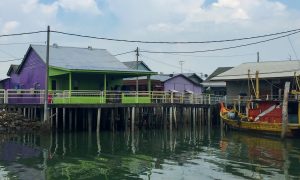Splashes of colour and a kaleidoscope of designs make up the dizzying, vibrant world of batik. The word “batik” translates loosely as “writing in wax” and is used to describe the delicate patterns of traditional Malay textile work where elaborate geometric patterns are drawn in wax on a garment to produce beautiful patterns.
ANCIENT ORIGINS
Is there anything those ancient Egyptians couldn’t do? Although batik can be found in many different parts of Asia, it is actually believed to have originated in the land of pharaohs! Batik items have been discovered in tombs dating back to two millennia ago, proving its popularity even back then. Today, some of the best designs come from Malaysia, and clothes with batik printing have gained a fanbase across many nations around the world.
Now, Malaysians proudly call batik their own, having evolved the traditional style into a distinctly local product. The less restrictive cultural environment in the country allowed innovations in the techniques and mechanics of batik production, developing it into a proud national outfit, popular with locals and foreigners alike.
TYPES OF BATIK
There are two main types of batik in Malaysia – hand-drawn and block-printed. Hand-drawn batik is where the designs are drawn on a fabric with hot liquid wax, using a metal object called a canting.
When the wax outlines are done, artists use brushes to paint the dyes within the outlines. The use of the brush allows for the creation of shaded and multi-hued designs. Various fabrics are used – including cotton, rayon, linen, voile, and silk – and are patterned with floral and geometrical motifs, which are arranged in different layouts in theme with current trends. Hand-drawn batik is usually produced in 4-metre lengths (used for women’s wear) or 2-metre lengths (for men’s wear), and is often used for formal events.
Block-printed batik replaces the canting with a copper block or a wooden stamp with an artistically patterned bottom. The block is dipped into wax and printed onto the fabric, which is then dip-dyed.Once the wax is removed, single-coloured batik is produced. To create multi-coloured batik,the process of waxing with different blocks, dying, and de-waxing has to be carried out several times. Block-printed batik does not have the intricate delicacy of hand-drawn batik, and similar shapes or patterns are repeated on a piece of fabric. Cotton is a popular fabric and the output quantity is around 20 metres – this type of batik is usually tailored into outfits for leisure wear and is also made into handicrafts and soft furnishings.
TRULY MALAYSIAN
Malaysian batik has a more varied selection of fabrics and designs, and tends to be lighter and more vibrant than its deeper coloured Javanese counterparts, making it a popular clothing choice in hot climates. In recent years, batik has seen a revival in everyday Malaysian life, with the government endorsing it as a national dress. In fact, civil servants are encouraged to wear batik as part of their work attire on the 1st and 15th days of the month – a patriotic choice for when your wardrobe needs a pick me up!
———————————————————————————————————
Source: The Expat December 2012
Read more:
- The Mercedes-Benz B200, A Family Hatchback with a Difference
- Price, Release Date and Features for Nokia Lumia 920 and 820 in Malaysia
- A Look at Fast Bikes Motorcycle Concept Store
Register for free on ExpatGoMalaysia.com
"ExpatGo welcomes and encourages comments, input, and divergent opinions. However, we kindly request that you use suitable language in your comments, and refrain from any sort of personal attack, hate speech, or disparaging rhetoric. Comments not in line with this are subject to removal from the site. "




